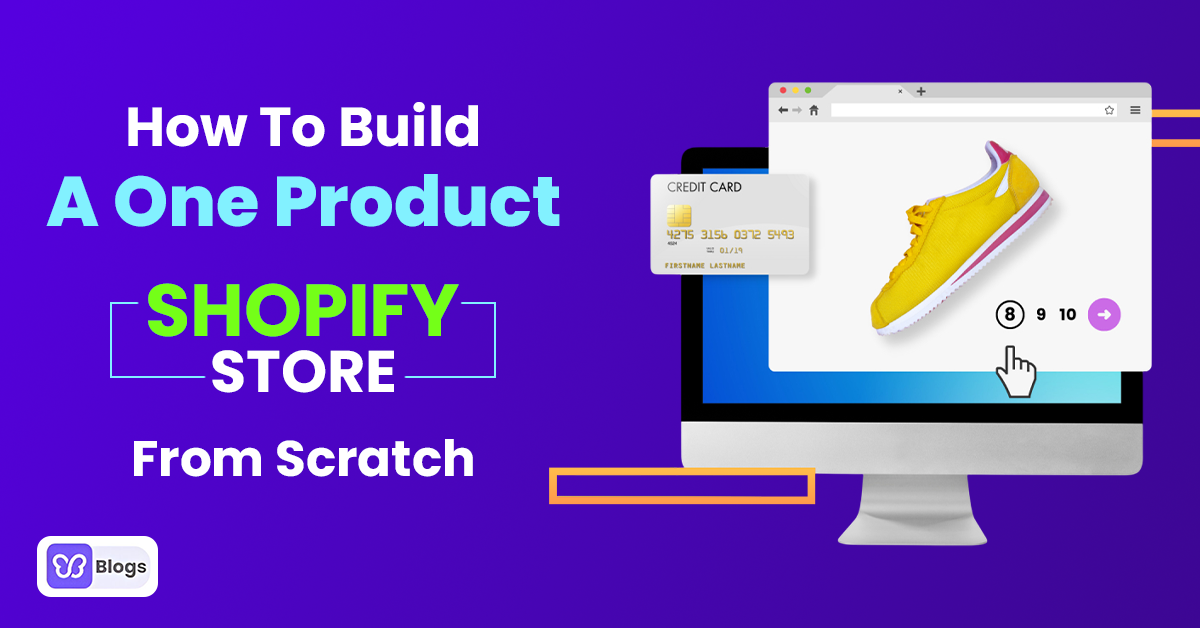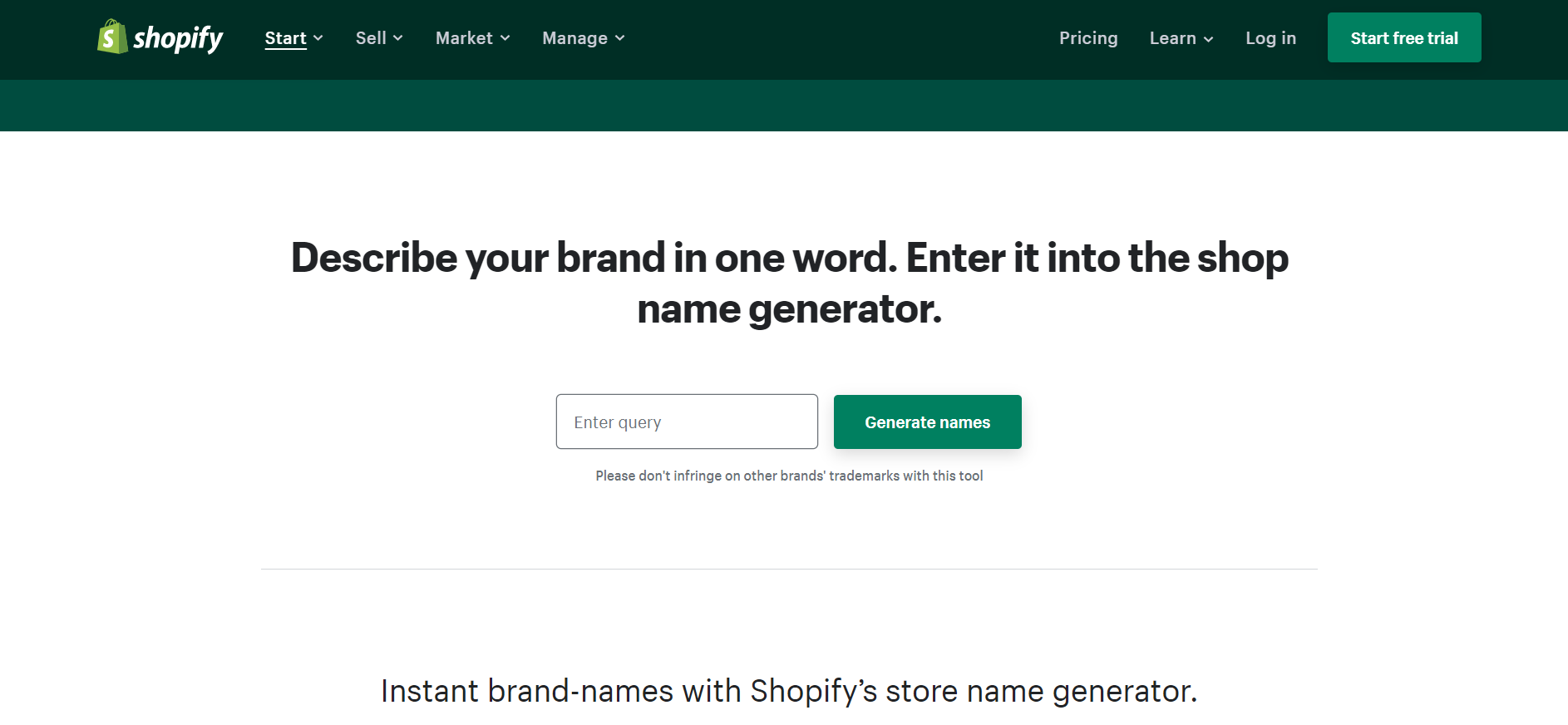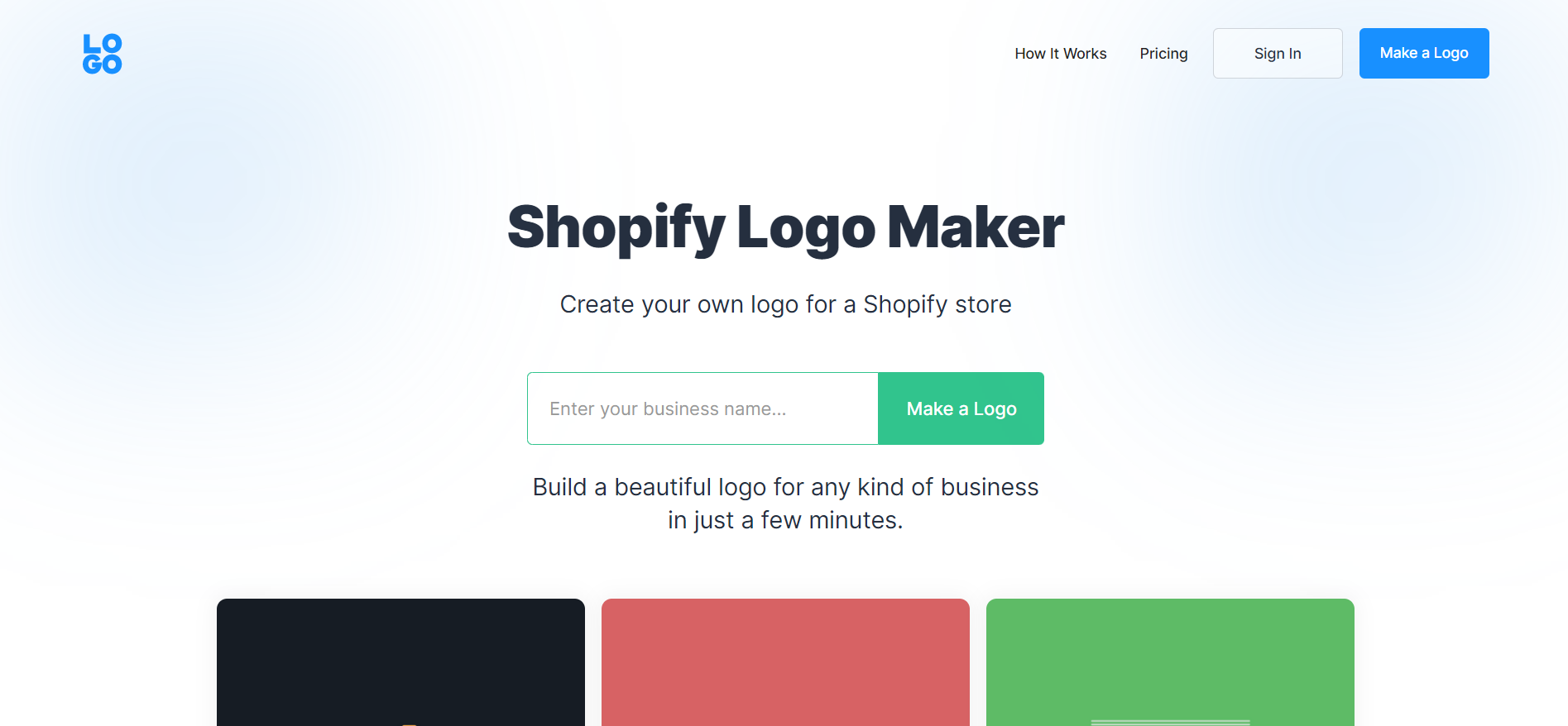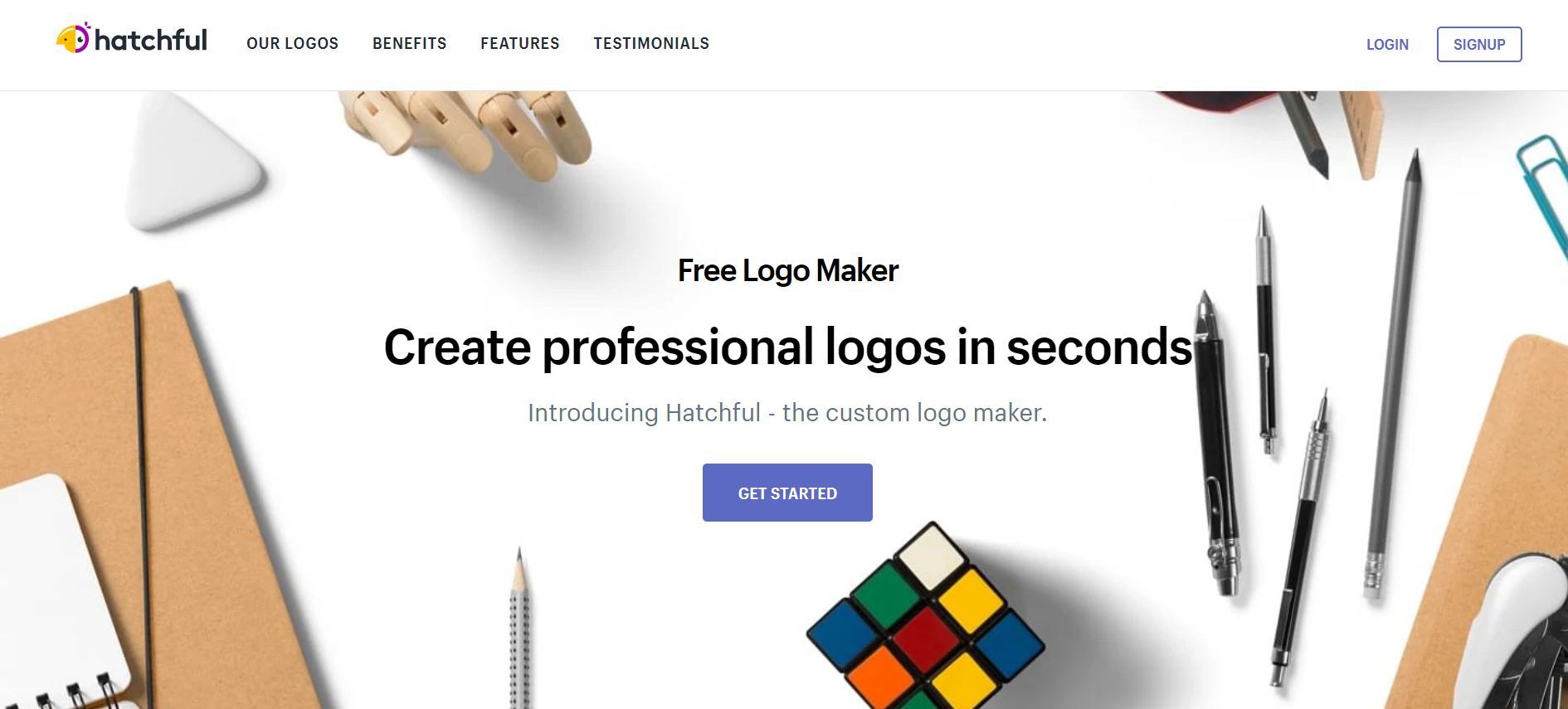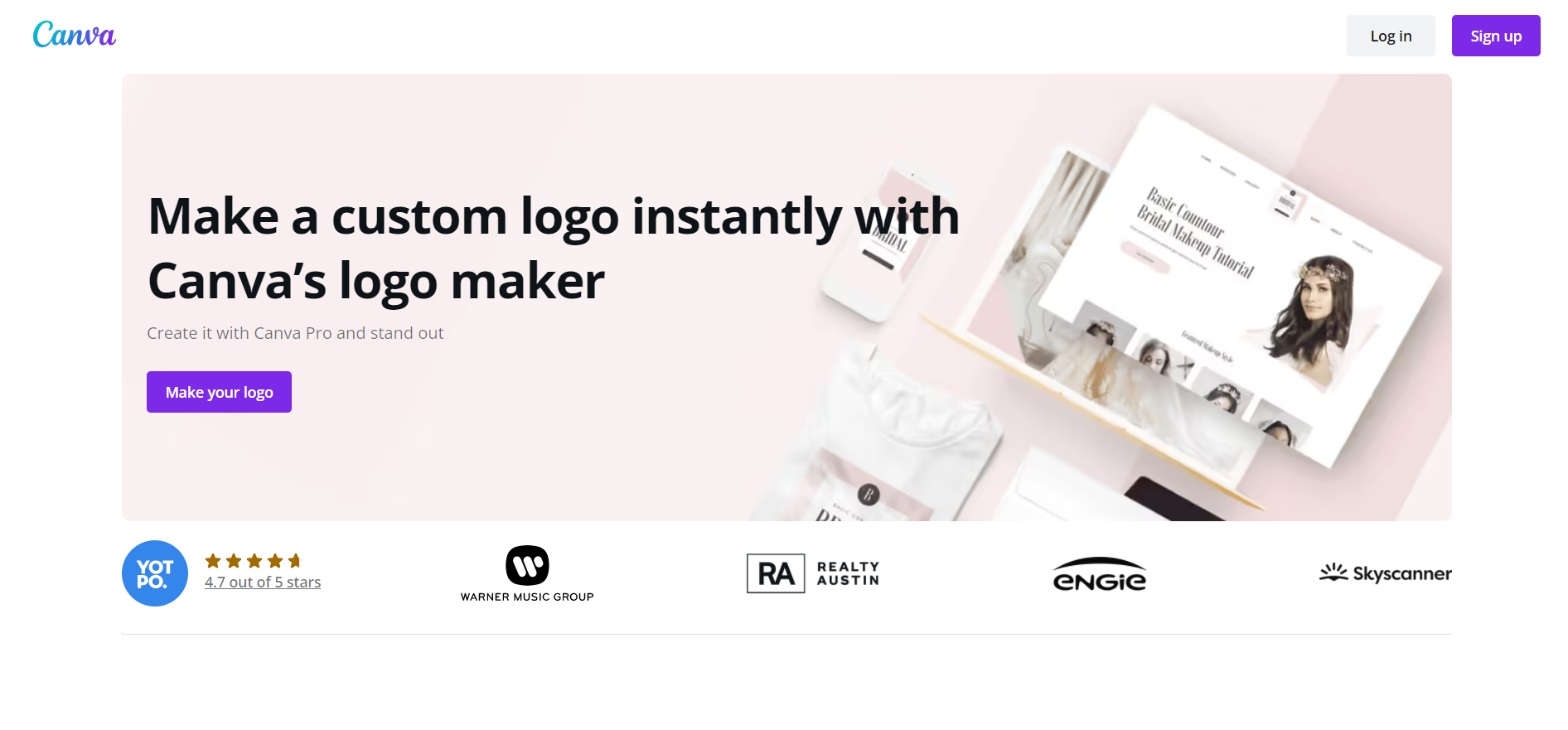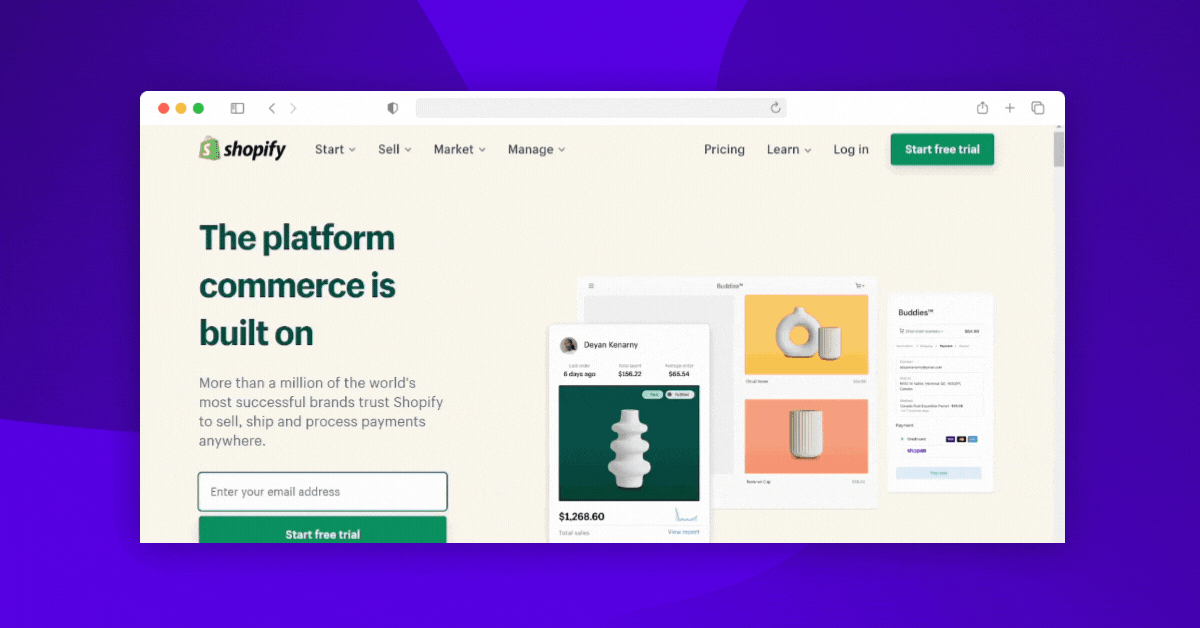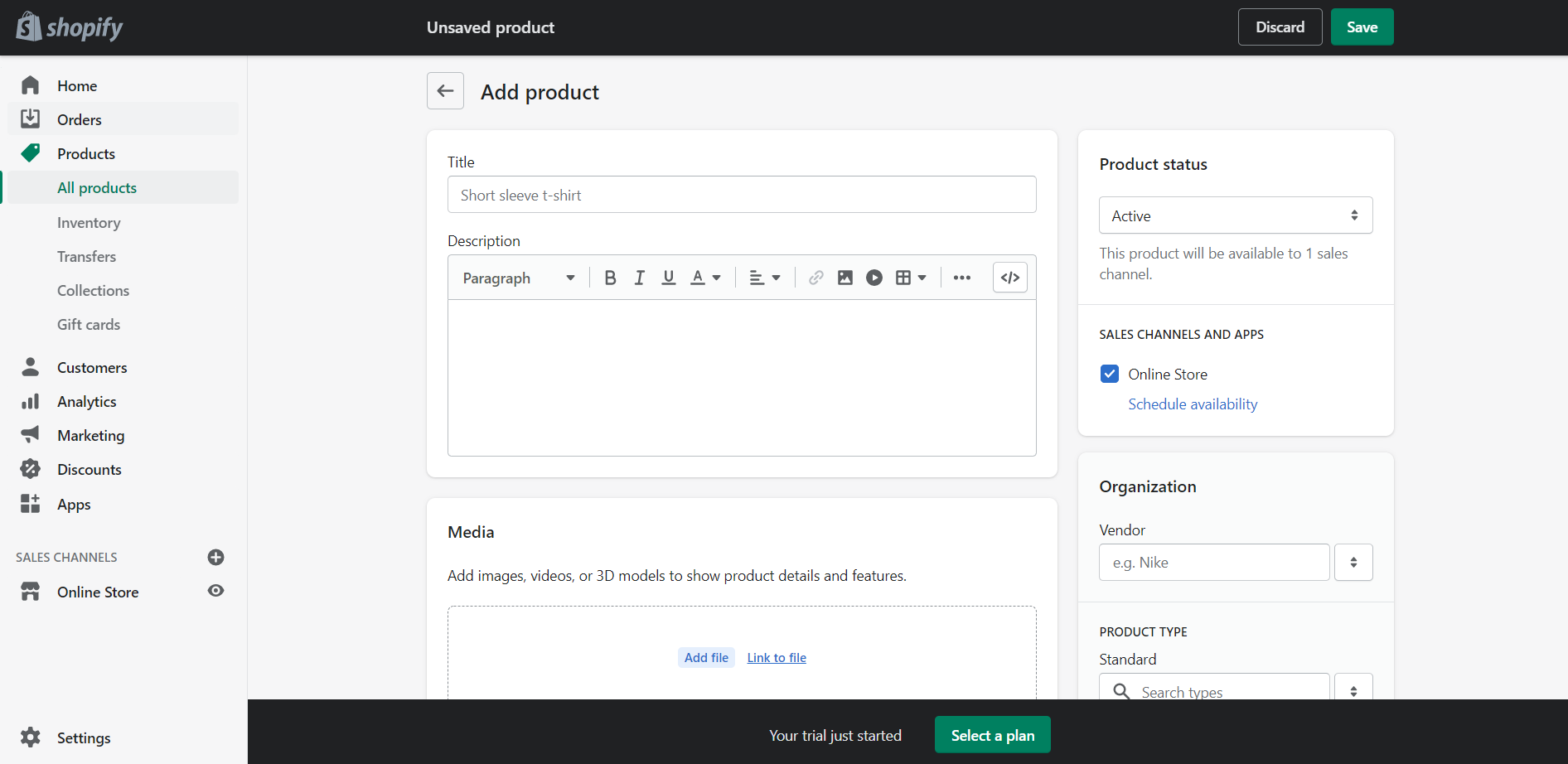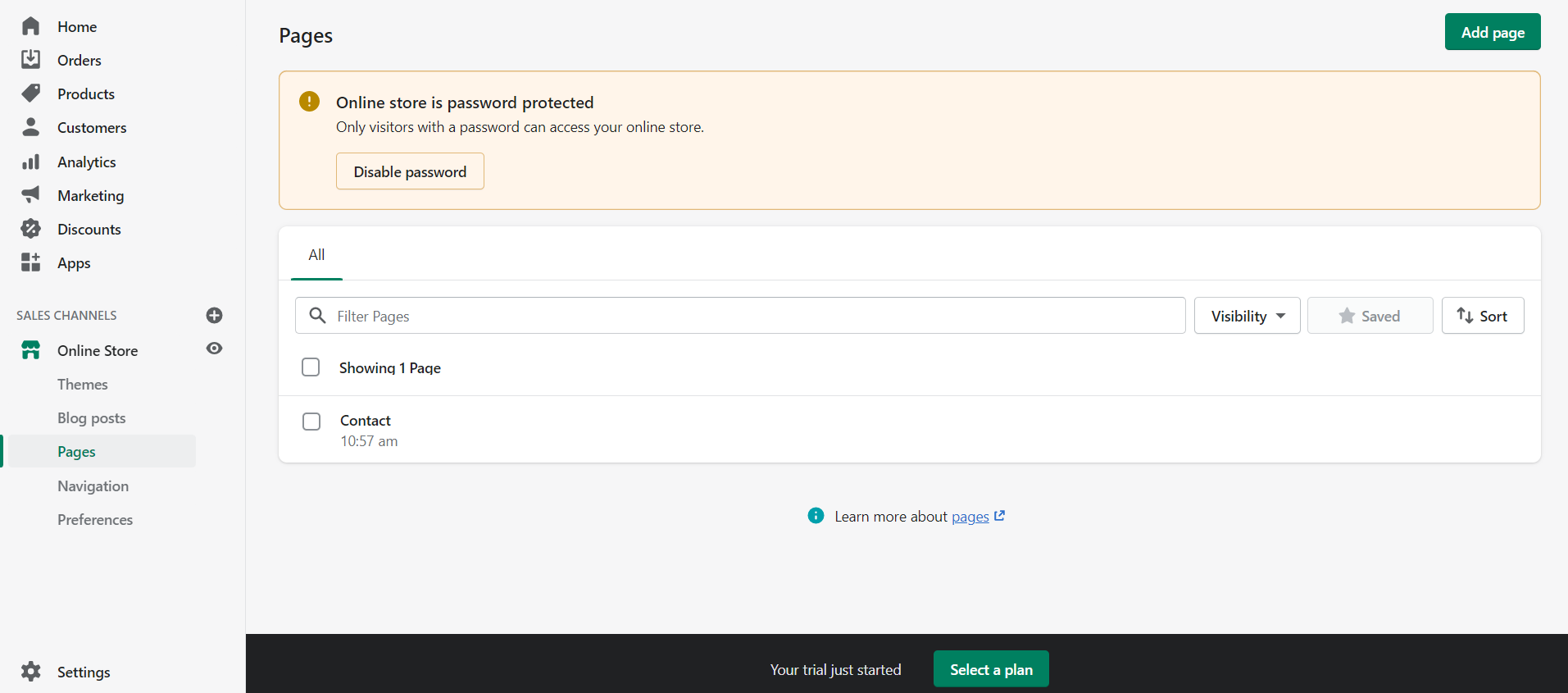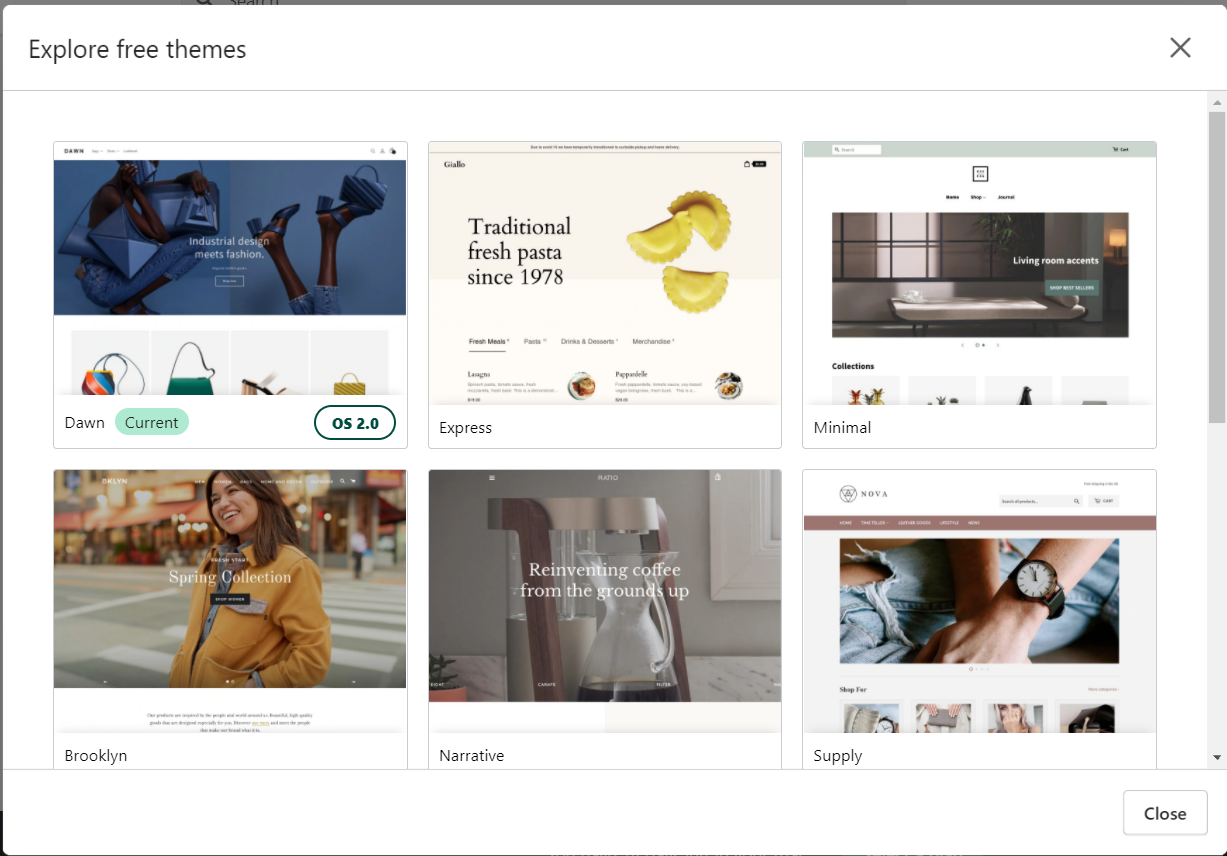Sometimes, all it takes is one brilliant idea to hit it big!
And it's true for ecommerce.
So, you will probably see some big and well-established Shopify stores with an extensive digital product catalog.
I know there are top ecommerce sites with hundreds of product listings to choose from, like Amazon, eBay, and Walmart...
Sure, having a lot of products can help your ecommerce store become successful.
But today, your perspective will change.
Because even if it seems absurd, building a one-product Shopify store can be highly profitable if you do it right. ?
This means that ecommerce isn't limited to multi-product shops anymore!
Wait, what? One?
Yep, you heard that right!
You can actually benefit from selling a single item online.
But... this is much easier said than done.
That's why this guide will help you... create a one-product Shopify store from scratch!
But before anything else, let's talk about some essential things to prep you, shall we?
What Is A Single Product Shopify Store?
A single-product Shopify store is an ecommerce site that features a single product.
This means brand owners can create a one-product Shopify store without managing multiple products.
And the good news? You can concentrate on producing a fantastic product rather than trying to sell multiple items and manage a vast ecommerce site with your small team.
I'm sure there's a question brewing up in your mind...
Is A One-Product Shopify Store Worth Trying?
Well, if you finish this guide, you're going to see some examples of one product Shopify stores that might convince you.
But spoiler alert: Yes, it's worth trying. And it's worth all the effort.
You might be hesitant at first, but this is also something you can strive to do. You can come up with an incredible idea and put it to work.
But before you can give your one brilliant idea all the time and attention it deserves... let's dive deeper.
Why Do You Need A One-Product Shopify Store?
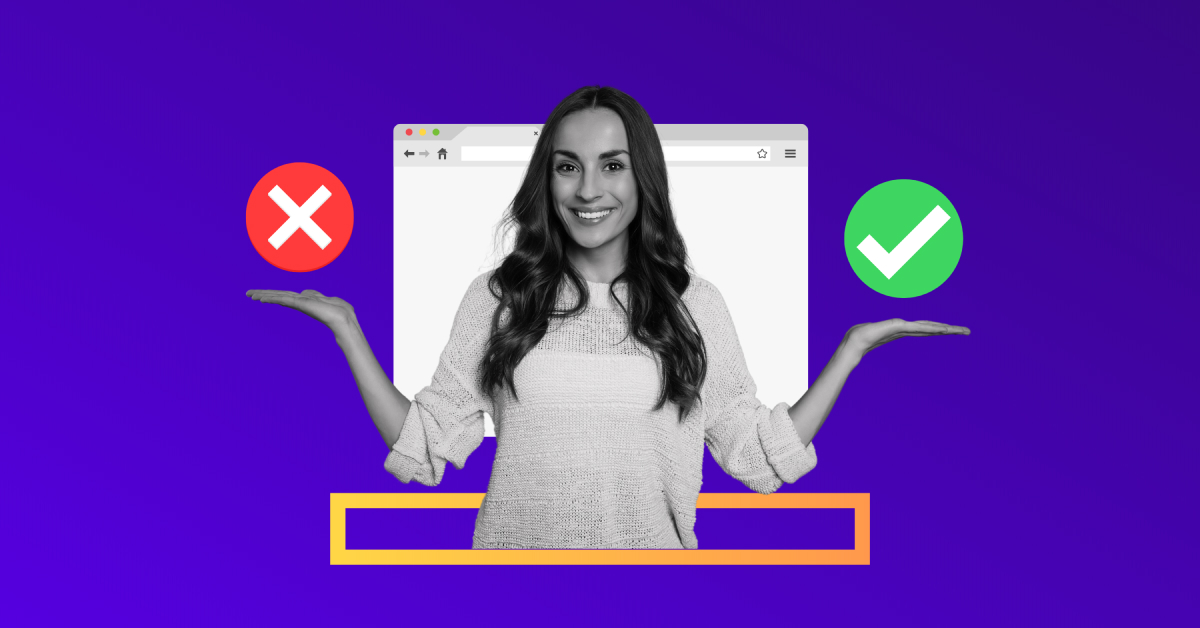
Advantages
1. You Can Focus On One Product
Perhaps you're wondering why you would limit yourself to one product... and I totally understand.
I mean, It's true. Offering multiple items gives people more significant choices, right?
But having more choices is not always a good choice.
In fact, according to Harvard Business Review, too many choices can cause confusion, anxiety, and dissatisfaction.
As a result, it can cause consumers to buy nothing at all.
So, a one-product store can simplify your customers buying decisions.
And mind you, selling just one product online can be just as profitable as running a mega-store with many different goods.
2. There Is A Sense Of Scarcity
Because customers wouldn't be able to purchase the same product elsewhere in the same way, they will rave about it.
And if successful, the demand for your product might be higher.
3. You Can Target A Specific Market
To gain more sales, you need to find your target market.
And through having a one-product Shopify store, you can find your target market easily. And if you put more effort into connecting with them, they might even recommend you to their family and friends! ?
4. You Can Simplify Your Marketing
Listen... this doesn't mean you shouldn't exert more effort and resources in marketing your product.
But crafting your marketing strategies might be easier with one product and a clear ideal customer in mind.
5. Branding Is A Breeze With One Product
It is easier when you have that one product that people will remember you for.
Your goal should be to have your brand at the top of consumers' minds when they think of a certain product category.
Not only does it increase sales, but it also facilitates the brand's word-of-mouth and referral marketing!
6. Your Team Doesn't Need To Be Large
With a one-product store, you don't need a lot of employees to handle marketing, oversee production, answer customer questions, shipping, etc.
Therefore, a one-product store requires less maintenance, so it's easy to manage.
At first, of course. But when your store becomes bigger, you'll eventually need to expand your team.
7. You Can Offer The Best Customer Service Possible
Since you're only selling one product, accommodating customers about their orders would be easy.
You can optimize customer experience, and you'll only have to answer questions related to one product.
But it's not just sugar, spice, and everything nice.
Disadvantages
1. No Cross-Selling And Upselling
This means you can't ask your customers to upgrade their order as you have no multiple products to choose from.
While there are still other ways to upsell, despite having one product, it might not be easy.
2. Fewer Repeat Customers
You'll have fewer repeat customers unless you sell something consumable, like food, shampoo, etc.
But if you're selling a gadget, shoes, or bag, you don't expect customers to return to your store in a month unless they want to purchase another one as a gift.
3. Your Marketing Tactics Might Get Repetitive
With a single product store, things can get dull and repetitive, so you have to be very creative in your marketing materials.
It's possible to sell one product but create various, unique content showcasing your product.
So, now that we've outlined the advantages and disadvantages of having a one-product store... are you ready to get the juicy part?
How To Create One Product Shopify Store

Choosing the product you're going to sell is very important because you need to think about it well.
Remember, you are selling ONE product. It needs to be great. So, you need to spend a lot of time planning to make sure it will sell.
Product Research
Since you're only selling a single product, make sure it's a great one.
Product research is essential in your planning process. This will determine the BEST product you can sell on your Shopify store.
And here are other things you need to remember when doing product research:
- Make sure the product has a huge demand.
- The product should not be seasonal.
- The product has low competition.
So, how can you know which is the best product out there?
The best thing you can do is to use product research tools.
Product research isn't as easy as pie. It also includes researching where to source your products.
But thankfully, we live in the digital age. Several tools can help you conduct your product research.
Here are some tools you can use:
1. Sell The Trend
Sell The Trend is a platform that can assist with your product research. Not only would it lead you to the best product, but it also analyzes the market and competition.
There are over 7 million products to choose from. Choosing the best product for your single Shopify store won't be as challenging because of this tool.
Another product research tool is...
2. Google Trends
Google Trends can help you see the trending keywords even from months ago. So, this tool helps analyze the patterns and relevance of whatever product you're trying to sell.
Don't forget... your product should have a low seasonality to have continuous success. Make sure to analyze the trends well.
And another way is...
3. Check Amazon
Amazon has millions of product listings. And this is a great way to conduct your product research because you can see what people need and what they're buying.
You can sort the products to see the Best Sellers or Customer Reviews.
So, what do you say? Product research is now made easier because of the tools available! Now, the next thing you need to conduct is...
Market Research
Another way to find out the best product you can sell is by determining if the product has demands.
And market research can help you with that.
So, let me give you three reasons why market research should be in your things-to-do when building your one-product Shopify store:
- Market research can help you create a strong business and marketing strategy.
- It can give you an insight into how much profit or revenue to expect.
- You can come up with a product that has great demand.
I won't make you wait any further! Here are some ways to conduct your market research...
1. Use Social Media
As I said above, your product shouldn't be seasonal as much as possible.
But social media can help in your product research because it gives you insights into what people are talking about.
Aside from their comments, using social media can also identify your potential customers' concerns.
For example, you can check out reviews from competitors on their Facebook pages. You can also see the trends or conduct surveys.
Social media is accessible nowadays. Make sure to be always up to date with the latest.
Another way to conduct market research is...
2. Check Amazon Reviews
Yep, Amazon. Again. But Amazon Reviews.
Amazon has a goldmine of reviews in every product that would be useful in building your single product Shopify store.
Let's say you're already thinking of selling a specific product. Checking Amazon reviews would be a great way to see what your target market says about the product.
And you can use these reviews to improve yours.
So, last but not least...
3. Join Online Forums
Online forums are used to discuss anything under the sun.
And what's more beautiful than an online space where people with no real names but have honest opinions share their insights?
That's why if you're looking to see how to improve your product or what people have to say about the likes of your product...
Joining an online forum is one way to achieve this!
Now, after conducting product and market research... it's time to...
Optimize Your Ecommerce Store For Conversion

Optimizing for conversion is essential when building a Shopify store.
So, once you're done choosing and customizing your ecommerce site's theme, why don't we optimize it to get more conversions?
Add Conversion Triggers
Conversion triggers help your website visitors decide if they want to purchase your products. These play a role in reducing your cart abandonment rate and increasing your sales!
So, what are some examples of conversion triggers you can use on your ecommerce website?
- Cart Countdown
- Urgent CTA or Call To Action
- Sales Countdown
- Cart Discount
- Discount Saved
Since you're only selling one product on your Shopify store, it's best to maximize your sales potential. Hence, conversion triggers should be part of your ecommerce website.
But here's a tip: If you're using the Debutify theme, adding these Add-Ons is a no-brainer with one-click integrations!
So, if you want to turn your visitors into customers... make sure to take advantage of these features. ?
Another thing you need that will help you gain sales is to...
Add Multiple High-Quality Images
Before you purchase a product, would you buy if it doesn't have enough product photos?
Maybe, or maybe not.
But what you need to realize is product photography is important in the world of ecommerce.
As compared to brick-and-mortar stores, shoppers can physically touch and feel the products they want to buy. But online shoppers can only see this through product photos.
That's why it's important to put some photos on your ecommerce store.
So, here are some tips for using high-quality images on your ecommerce website:
- Showcase your product's features. You are only selling one product, so make sure to flaunt its features and uniqueness!
- Invest in good equipment. If you can't hire a product photographer, you can use equipment to help you create great product images. It can be lighting, a tripod, a camera, etc.
- Compress images. Too many high-quality images might affect the speed of your website, and that's a no-no!
Oh, and speaking of which...
Optimize Website Speed
Did you know that 53% of your website visitors might leave your website if doesn't load within 3 seconds?
Such a huge number, right?
So, if you want your single product Shopify store to get more conversions... you always need to check if your website is loading fast.
And you can do this by:
- Compressing videos and images
- Reducing unnecessary plugins
- Choosing a fast-loading theme
- Minifying your codes
- Testing your website speed regularly
Online shoppers are impatient nowadays. Make sure they don't go to your competitor's website by having a fast-loading website speed!
Aside from this, the next one is just as important...
Make Your Ecommerce Website Mobile-Responsive
What if your potential customers aren't using a desktop and only have a phone?
You might lose sales if your website doesn't respond well to mobile users. So, it's important to have an ecommerce website that's mobile-friendly!
Wondering how to achieve this? Here's how!
- Choose a mobile-friendly theme. Installing a mobile-responsive theme on your Shopify store will make your life easier.
- Reduce popups. Popups are great. But they might trouble mobile users as phones have smaller screens. Reduce the use of popups as much as possible.
- Change fonts and buttons sizes. Since mobile devices have smaller screens, it's best to adjust the fonts and buttons to make online shopping more convenient.
See? Making your ecommerce site mobile-friendly isn't that hard, right? But it would definitely pay off!
Another way to optimize your single product Shopify store for conversion is...
Show Social Proof Or Reviews
Social proof or reviews can help you increase your conversion rate. They build trust and credibility.
Because you're only selling one product, it's important to show that people trust you and are using your products.
So, wanna know how to gain reviews?
- Encourage reviews from your customers through incentives.
- Make it easy for them to leave reviews.
- Use an app to display reviews on your ecommerce store.
Speaking of which... there is something coming that will help you showcase customer reviews. ?
Now, once you have an optimized ecommerce store... why don't you flaunt your product to the world?
5 Examples Of One Product Shopify Stores To Inspire You

I'm sure you want to see the actual Shopify stores to inspire you. And your wish is my command!
1. SNOOZ
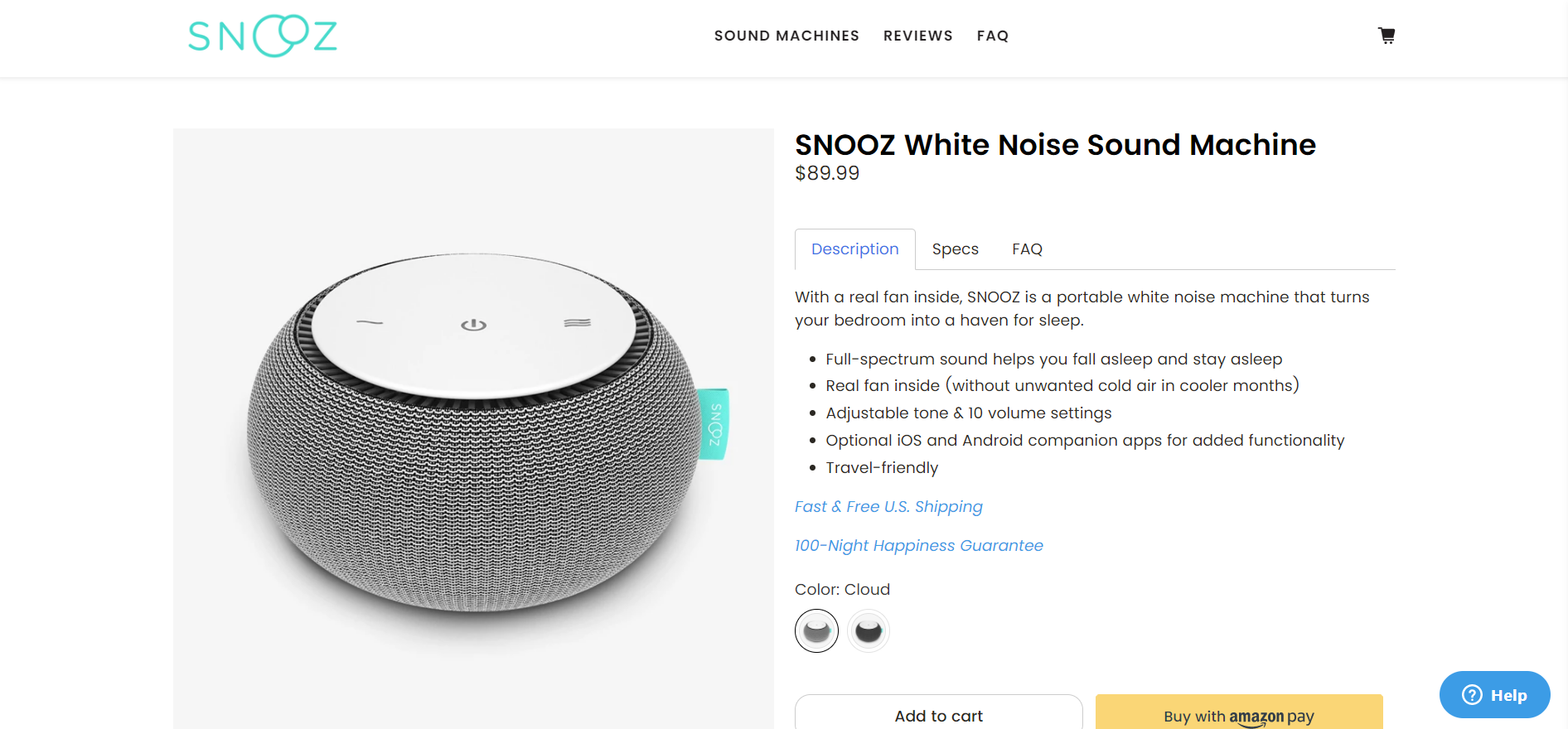
It's a single product Shopify store that sells sound machines that will help improve your sleep. Now, why is this a successful one product ecommerce store?
When you go to Snooz's website, it's not hard to navigate. You can easily find what you're looking for after a bit of scroll.
And if we look at the product details, it's very informative. The details are easy to read, and there's also a FAQ option where you can find the answers you're looking for.
But here's another thing...
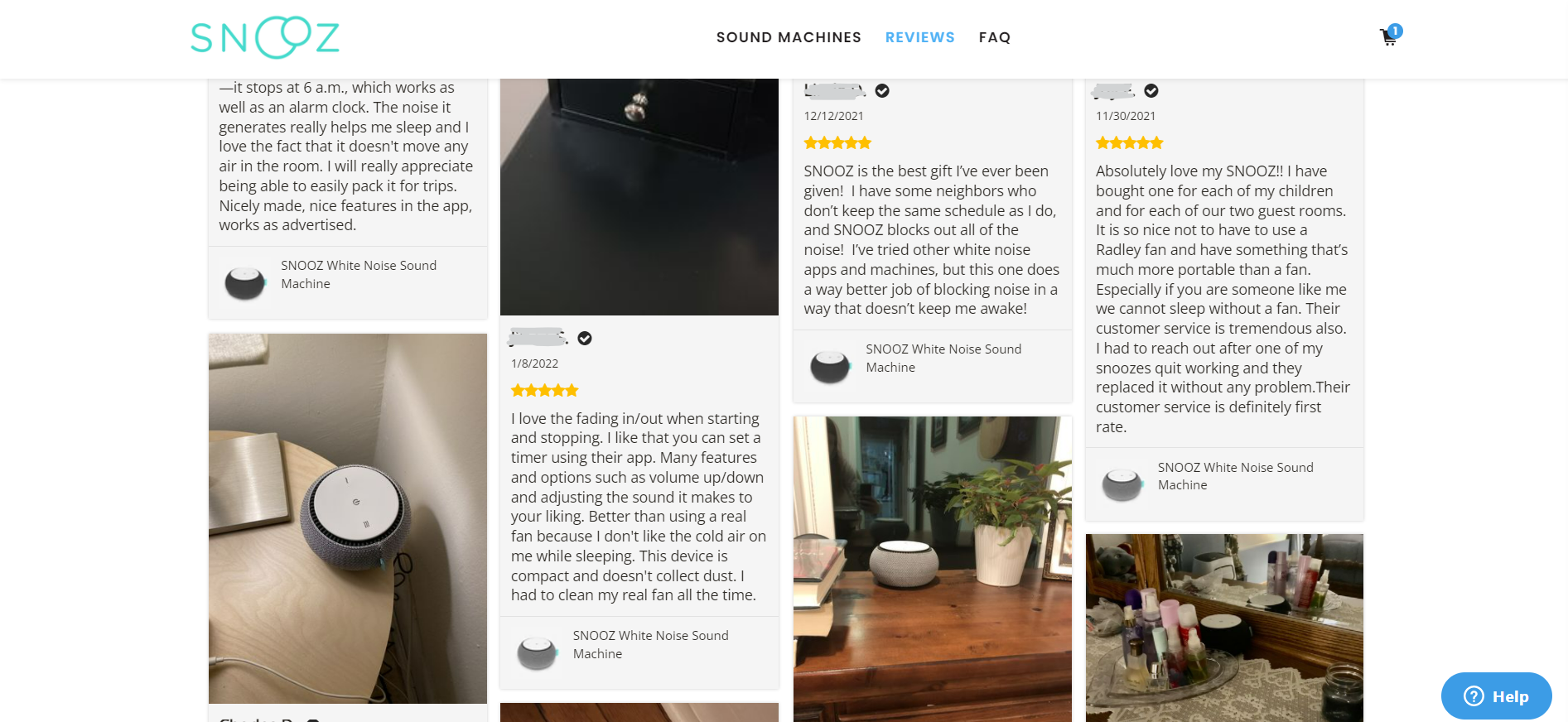
There is a review page!
As I mentioned above, social proof is vital in getting customers because it boosts the trust and credibility of potential customers in your ecommerce store. And Snooz is doing it right.
Another great example is...
2. WatchPlay
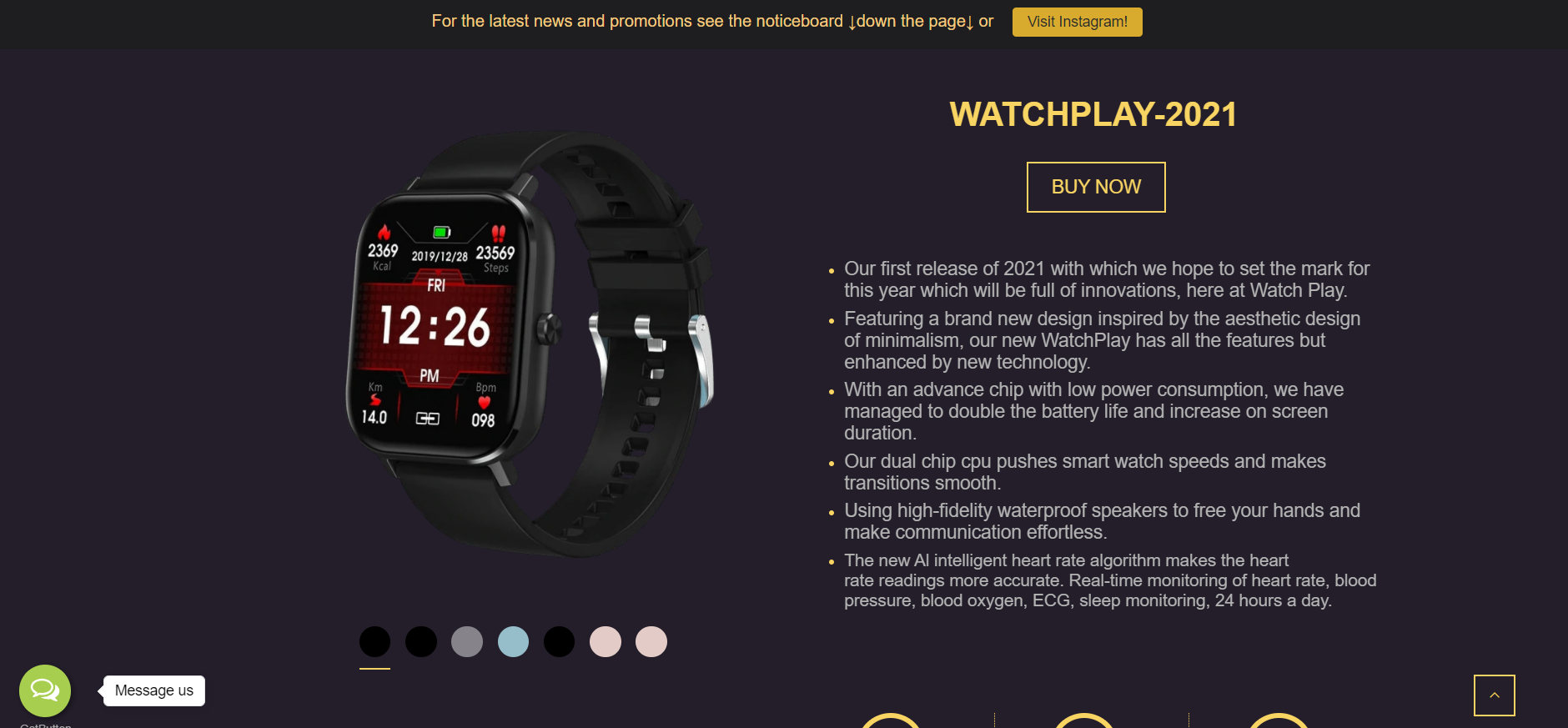
WatchPlay sells a smartwatch that allows you to track your activities, such as your health. It also detects movements and steps!
Like our previous example, WatchPlay also detailed their product features in a way that's easy to grasp for their potential customers. You can also check out different colors quickly.
And remember what I said earlier?
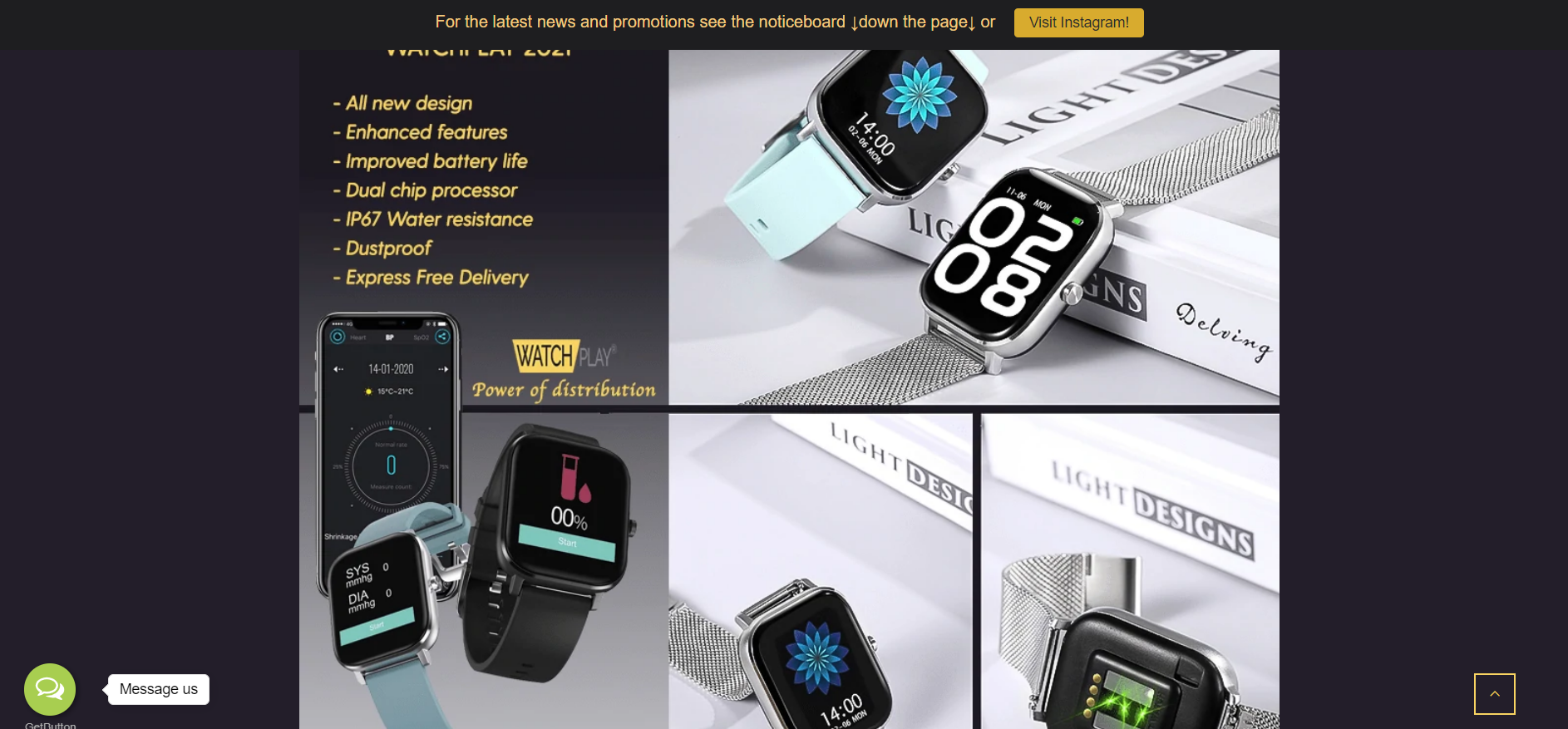
Multiple product photos are essential.
Since their potential customers can't feel the product physically before purchasing, WatchPlay has different photos of their products showing different angles and features.
The next store you'll see is...
3. BlendJet

BlendJet sells a portable blender convenient for customers as they can carry it everywhere and even drink from it!
But the best part is their website is optimized, and it's easy to navigate. The product features are also displayed with clean and uncomplicated design, which showcases their value proposition.
And they also have a blog!
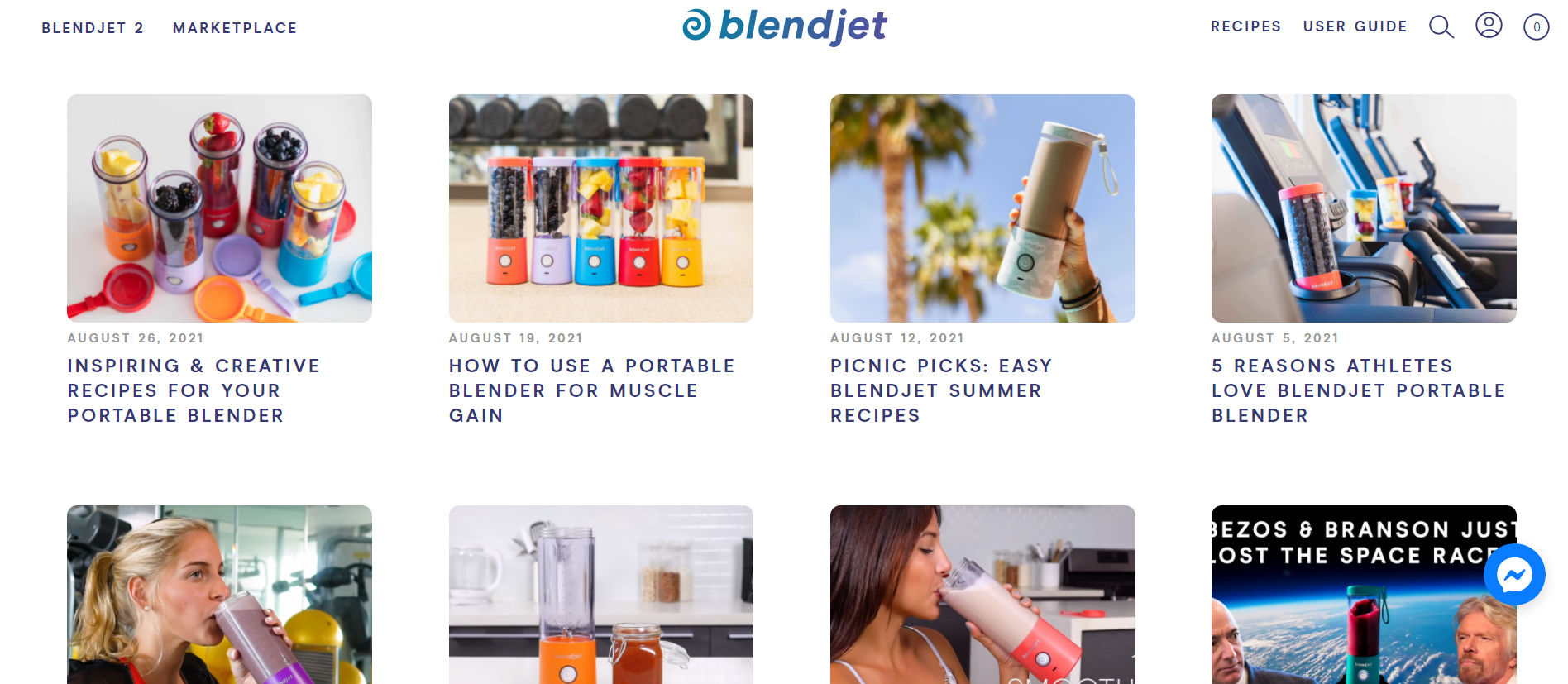
Blogs can help in your content marketing by giving customers information on how to use your product. And for BlendJet, it's through sharing recipes and educational content.
Another example is...
4. Arctic Whitening
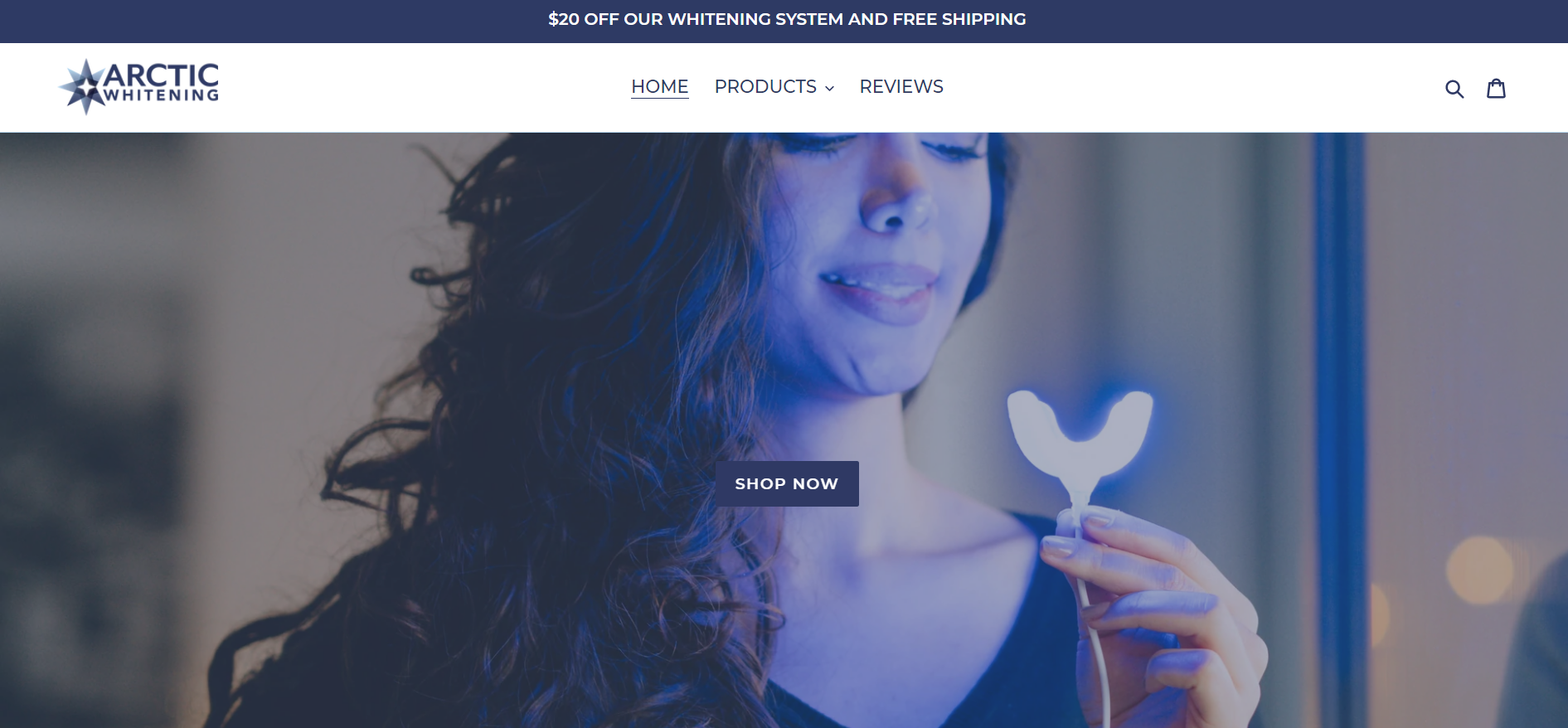
Arctic Whitening markets a teeth whitening product that's free of harmful chemicals.
What I love about their website is everything is easy to find. The product pages and reviews are also on the top navigation, making it effortless to discover.
If you also scroll down a bit, you can already see some of the reviews with actual photos.

And another thing I love about their website is how they solve the problem. As you can see, they're asking if their website visitors have sensitive teeth.
It's important because there are other potential customers who are still 100% sure if they'll purchase. But they are acknowledging the problems they might be facing and offering a solution.
And last but not least...
5. Truff

Truff focuses on selling different varieties of hot and truffle sauce. In fact, it was listed as one of Oprah's favorite things in 2021.
On their product page, you can see that they listed ways to use their product for.
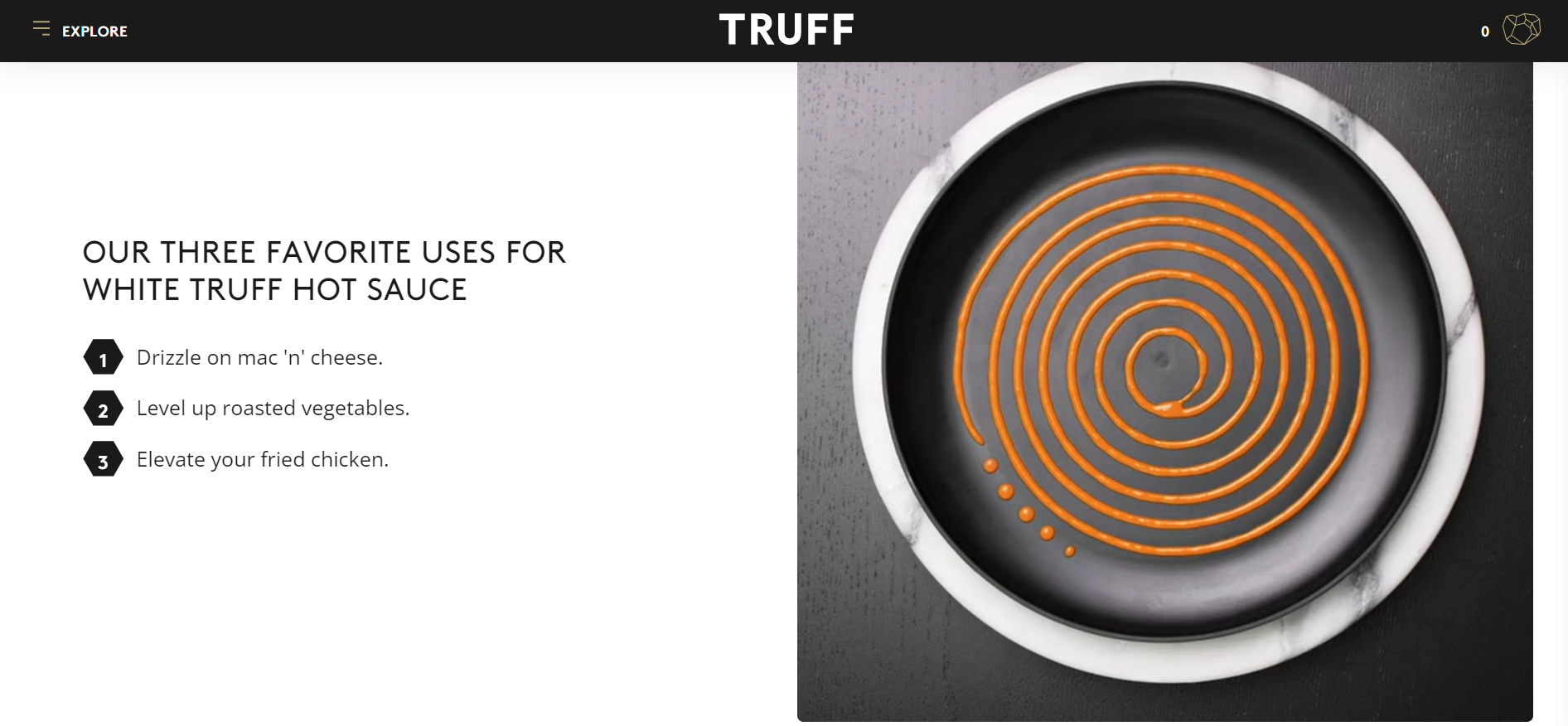
The overall website design is also simple yet elegant with its color scheme... as well as its minimalist branding and packaging.
No wonder it's one of Oprah's favorite things.
So, are you ready to be successful like these one product Shopify stores?

